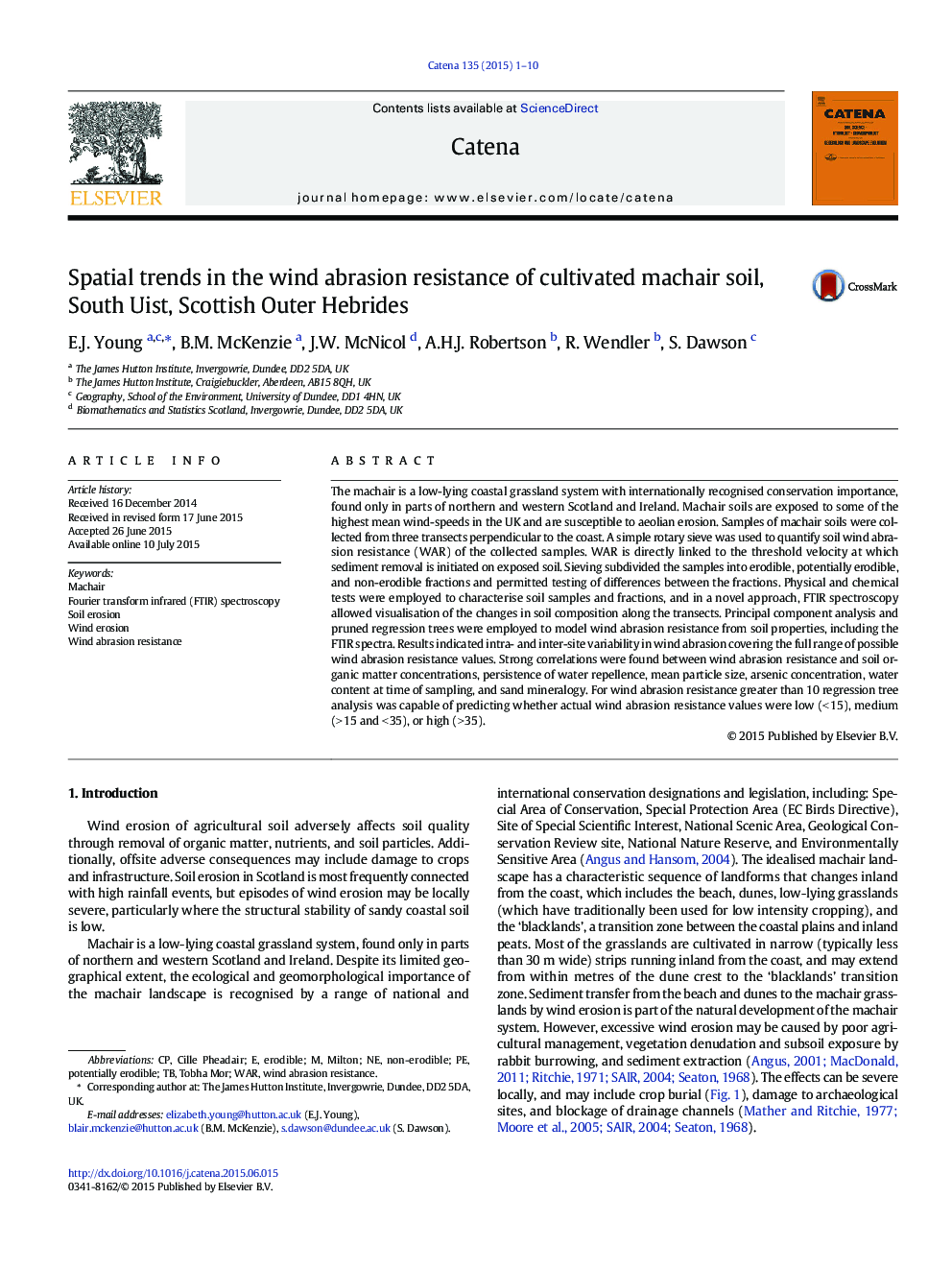| کد مقاله | کد نشریه | سال انتشار | مقاله انگلیسی | نسخه تمام متن |
|---|---|---|---|---|
| 4571072 | 1629217 | 2015 | 10 صفحه PDF | دانلود رایگان |

• We assess spatial trends in the sensitivity of machair soils to wind abrasion.
• Relationships between wind abrasion resistance and soil properties are examined.
• Wind abrasion resistance has high inter- and intra-site variability.
• Wind abrasion resistance generally increases on moving towards inland peat soils.
• Models using soil properties have potential to predict wind abrasion resistance.
The machair is a low-lying coastal grassland system with internationally recognised conservation importance, found only in parts of northern and western Scotland and Ireland. Machair soils are exposed to some of the highest mean wind-speeds in the UK and are susceptible to aeolian erosion. Samples of machair soils were collected from three transects perpendicular to the coast. A simple rotary sieve was used to quantify soil wind abrasion resistance (WAR) of the collected samples. WAR is directly linked to the threshold velocity at which sediment removal is initiated on exposed soil. Sieving subdivided the samples into erodible, potentially erodible, and non-erodible fractions and permitted testing of differences between the fractions. Physical and chemical tests were employed to characterise soil samples and fractions, and in a novel approach, FTIR spectroscopy allowed visualisation of the changes in soil composition along the transects. Principal component analysis and pruned regression trees were employed to model wind abrasion resistance from soil properties, including the FTIR spectra. Results indicated intra- and inter-site variability in wind abrasion covering the full range of possible wind abrasion resistance values. Strong correlations were found between wind abrasion resistance and soil organic matter concentrations, persistence of water repellence, mean particle size, arsenic concentration, water content at time of sampling, and sand mineralogy. For wind abrasion resistance greater than 10 regression tree analysis was capable of predicting whether actual wind abrasion resistance values were low (< 15), medium (> 15 and < 35), or high (> 35).
Journal: CATENA - Volume 135, December 2015, Pages 1–10